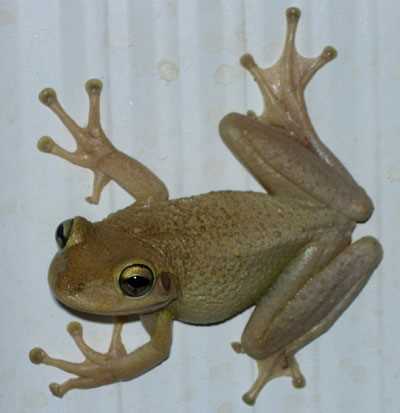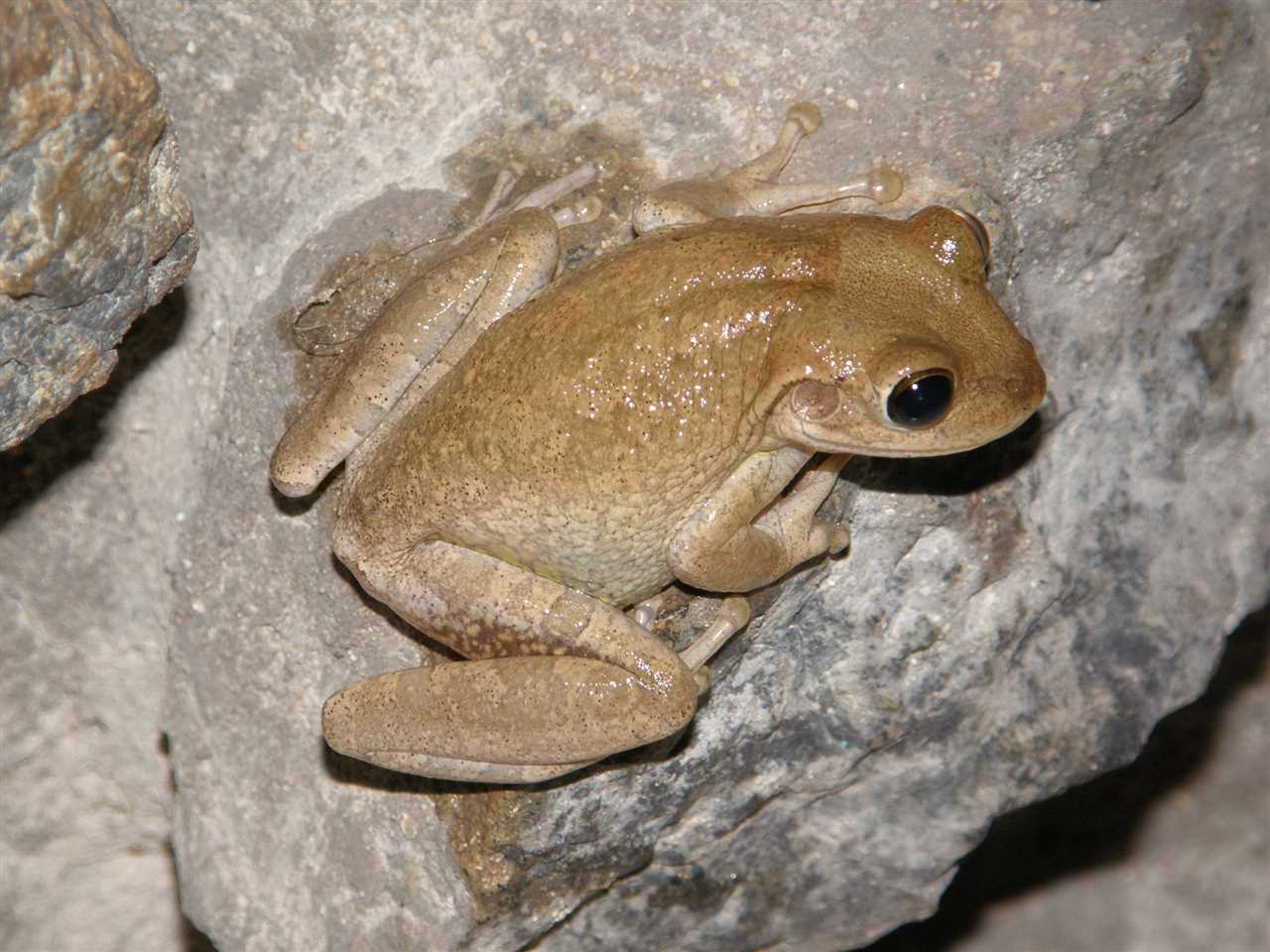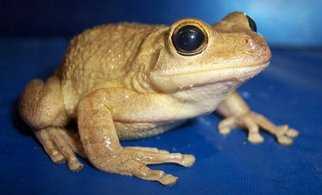
One of the most fascinating aspects of Cuban tree frogs is their ability to produce toxins. While they are not considered highly venomous, they do secrete a mild poison that can cause irritation and discomfort if it comes into contact with human skin. This poison acts as a defense mechanism, helping the frogs ward off predators.
What You Need to Know About Cuban Tree Frogs
One of the most important things to know about Cuban tree frogs is that they are poisonous. While they may not pose a direct threat to humans, they can be harmful to pets and other animals. The skin of these frogs produces a toxic secretion that can cause irritation and even death in smaller animals.
Another important fact about Cuban tree frogs is that they are highly invasive. These frogs are adaptable and can survive in a variety of habitats, including urban areas. They reproduce rapidly and can quickly establish large populations, which can have negative impacts on native wildlife.
Facts About Cuban Tree Frogs
Cuban Tree Frogs Are Poisonous
It’s crucial to handle Cuban tree frogs with caution and avoid touching them with bare hands. If you come into contact with a Cuban tree frog or its secretions, thoroughly wash your hands afterward to prevent any potential harm.
The Impact of Cuban Tree Frogs on the Environment
Although Cuban tree frogs may seem harmless, they can have a significant impact on the environment in areas where they have been introduced. These frogs are invasive species in many regions, including Florida, where their population has rapidly expanded.
Cuban tree frogs are opportunistic feeders, consuming various insects, small vertebrates, and even other frog species. Their voracious appetite can disrupt the local ecosystem by outcompeting native species for food and resources. Additionally, these frogs have few natural predators in their non-native habitats, allowing their populations to flourish unchecked.
Furthermore, Cuban tree frogs can pose a threat to native tree frogs through competition and predation. Their presence can lead to a decline in the population of native frog species, resulting in a decrease in overall biodiversity.
Why Are Cuban Tree Frogs a Problem?
1. Threat to Native Species
2. Predatory Nature
Cuban tree frogs, despite their small size, are voracious predators. They have a wide diet that includes insects, spiders, small reptiles, and even other frogs. This predatory behavior can have a negative impact on local insect populations and can even lead to the decline of native frog species.
3. Negative Effects on Human Infrastructure
Cuban tree frogs have been known to cause damage to human infrastructure, particularly electrical systems. These frogs are attracted to outdoor lights and can find their way into electrical boxes, causing short circuits and other electrical issues. Their presence can also lead to increased maintenance costs for homeowners and businesses.
4. Poisonous Secretions
5. Rapid Reproduction

Cuban tree frogs have a high reproductive rate and can lay a large number of eggs during the breeding season. This, combined with their ability to adapt to a wide range of habitats, allows them to quickly establish thriving populations in new areas. Their rapid reproduction can further exacerbate their impact on native species and ecosystems.
How to Identify a Cuban Tree Frog
If you live in an area where Cuban tree frogs are present, it’s essential to know how to identify them. Here are some key characteristics that can help you distinguish them from other frog species:
Appearance
Cuban tree frogs are typically large frogs, measuring around 1.5 to 5 inches in length. They have smooth, warty skin that can range in color from light tan to dark brown or gray. One distinguishing feature is their bulging eyes with vertical pupils.
These frogs also have adhesive toe pads that help them cling to vertical surfaces, such as trees or walls. Their toe pads are larger and more pronounced compared to other tree frogs.
Call
The call of a Cuban tree frog is loud and distinctive. Males produce a deep, resonating “brraaark” sound that can be heard for long distances. Their calls are often described as similar to the sound made by a rubber band being plucked.
Size and Folds
Adult Cuban tree frogs are larger than most native American tree frogs. Their bodies are thick and bulky, and they have well-developed, muscular hind legs. They also have noticeable skin folds on their backs and sides, giving them a slightly wrinkled appearance.
If you encounter a frog that matches these characteristics, there’s a good chance it could be a Cuban tree frog. However, it’s always best to consult with a local expert or herpetologist to confirm the identification.
What Do Cuban Tree Frogs Eat?
The primary diet of Cuban tree frogs consists of insects. They will eat beetles, ants, moths, flies, and other small insects that they can catch. These frogs are excellent hunters and can quickly snatch their prey with their long, sticky tongues.
In addition to insects, Cuban tree frogs are also known to eat small vertebrates. They will consume small lizards, frogs, and even other tree frogs. They are opportunistic feeders and will take advantage of any food source that presents itself.
Where Do Cuban Tree Frogs Live?
Florida
In Florida, Cuban tree frogs have become highly invasive and pose a threat to the native ecosystem. They have been able to establish populations in various parts of the state, particularly in the southern region. Due to their adaptability, these frogs can survive in a range of habitats, including suburban neighborhoods, agricultural lands, and natural areas.
Hawaii and the Caribbean Islands
Cuban tree frogs have also been introduced to Hawaii and the Caribbean islands, where they have become invasive and negatively impacted the local wildlife. In Hawaii, they compete with and prey upon native frog species, leading to declines in their populations. Similarly, in the Caribbean islands, Cuban tree frogs have been known to outcompete and displace native tree frogs.
Habitat Requirements
Cuban tree frogs require moist environments to thrive. They are commonly found near bodies of water, such as ponds, lakes, and swamps. They also seek out shelter in trees, shrubs, and human-made structures, including buildings and houses. These frogs are excellent climbers and are often observed on walls, ceilings, and even windows.
| Key Habitat Characteristics | Description |
|---|---|
| Moisture | Cuban tree frogs require high levels of moisture and are commonly found in wet habitats. |
| Vegetation | They seek out shelter in trees and shrubs, as well as in human-made structures. |
| Water Sources | Bodies of water such as ponds, lakes, and swamps are their primary water sources. |
How to Prevent Cuban Tree Frogs from Invading Your Home
Frogs are a common sight in many areas, but not all frog species are harmless. Cuban tree frogs are a species that can cause problems if they invade your home. These frogs are not only a nuisance, but they can also be poisonous. Here are some tips on how to prevent Cuban tree frogs from invading your home:
- Keep your yard clean and well-maintained: Cuban tree frogs are attracted to homes with lush vegetation and standing water. To deter these frogs, make sure to trim shrubs and trees away from your house and remove any standing water sources, such as birdbaths or empty containers.
- Install screens on windows and doors: Another way to keep Cuban tree frogs out of your home is by installing screens on windows and doors. Make sure the screens are in good condition and free of any holes or tears that may allow frogs to enter.
- Remove food sources: Cuban tree frogs are opportunistic eaters and will feed on insects and other small animals. To discourage these frogs from coming near your home, remove food sources by keeping your yard and surrounding areas free of debris and regularly emptying garbage cans.
- Consider using frog repellents: There are commercial frog repellents available that can help deter Cuban tree frogs. These repellents typically contain natural ingredients that are safe for humans and pets but can be unpleasant for frogs. Follow the instructions carefully when using these products.
Are Cuban Tree Frogs Invasive?
One of the main reasons why Cuban tree frogs are considered invasive is their ability to outcompete native species for resources. These frogs are aggressive and opportunistic predators, not only threatening native frogs but also consuming other small animals, such as lizards and insects. This can disrupt the balance of ecosystems and have negative effects on local biodiversity.
Efforts have been made to control the spread of Cuban tree frogs and mitigate their impact on native species and ecosystems. These measures include trapping and removing the frogs, as well as educating the public about their negative effects. However, complete eradication of this invasive species has proven to be challenging due to their ability to reproduce rapidly and adapt to different environments.
What to Do If You Find a Cuban Tree Frog in Your Yard

| Step | Actions |
|---|---|
| 1 | |
| 2 | Use gloves or a plastic bag to capture the frog if possible. |
| 3 | Do not release the frog elsewhere as it can spread and become an invasive species. |
| 4 | If you are unable to capture the frog, consider contacting a local wildlife or pest control professional who is trained in dealing with Cuban Tree Frogs. |
| 5 | Make sure to secure your home and yard to prevent Cuban Tree Frogs from entering, such as sealing any gaps or cracks in windows, doors, and walls. |
| 6 | Remove any standing water sources, as Cuban Tree Frogs are attracted to moisture. |
| 7 | Consider installing mesh screens on windows and vents to keep Cuban Tree Frogs out. |
| 8 | Inform your neighbors about the presence of Cuban Tree Frogs and encourage them to take preventative measures as well. |
By taking these steps, you can help prevent the spread of Cuban Tree Frogs and minimize their impact on the local ecosystem.
Cuban Tree Frog Removal and Control Methods
One of the most important steps in removing and controlling Cuban Tree Frogs is to ensure that you are knowledgeable about their habits and biology. This will help you to better understand how to effectively deal with them.
Using barrier methods can also help to prevent Cuban Tree Frogs from entering your property. This can include sealing any cracks or holes in your house, as well as installing mesh screens on doors and windows to prevent their entry.
If you are unsure of how to properly remove or control Cuban Tree Frogs, it is recommended to consult with a professional pest control expert. They can provide guidance and assistance in dealing with these invasive frogs and help to prevent further spread.
Is It Legal to Kill Cuban Tree Frogs?
It is crucial to note that killing these frogs should not be the first course of action. One should consider alternative methods of removal and control before resorting to lethal measures.
If individuals decide to kill Cuban tree frogs, they must do so humanely and responsibly. This can include methods such as euthanizing the frogs quickly and painlessly or using approved pesticides that target these invasive species.
However, it is vital to exercise caution and avoid using harmful chemicals or methods that may harm other native species or the environment. It is recommended to seek guidance from experts or professional pest control services when dealing with Cuban tree frogs.
Additionally, individuals may also consider capturing and relocating these frogs to suitable habitats away from human settlements. This can be a more humane way to deal with the issue without resorting to lethal measures.
Other Considerations When Dealing with Cuban Tree Frogs
One consideration when dealing with Cuban tree frogs is their ability to breed rapidly. Female Cuban tree frogs can lay up to 1,000 eggs at a time, which hatch into tadpoles and eventually grow into adult frogs. This rapid reproduction can lead to a population boom, making it even more difficult to control their numbers.
Another consideration is the impact of Cuban tree frogs on other native species. These voracious predators will eat almost anything that fits in their mouth, including insects, lizards, and even small birds. This can disrupt the delicate balance of the ecosystem and potentially lead to declines in native populations.
Overall, dealing with Cuban tree frogs requires careful consideration of their impact on the ecosystem and adherence to legal guidelines. By taking proactive measures, you can help prevent the spread of these invasive frogs and protect your local wildlife.

I’m Lena Adams—a product of an unconventional upbringing in the African wilderness. My father, a daring explorer of African wildlife, sparked my fascination with reptiles, a passion that intertwined with the tragic loss of my mother during an expedition, leaving an indelible mark on my life. Driven to understand the creatures that captivated my parents, I embarked on my journey, sharing insights about reptiles, frogs, and lizards on my website. Through my explorations and conservation efforts, I honour my family’s legacy while seeking connections—to the creatures, nature, and the mother whose presence I yearn to understand.
